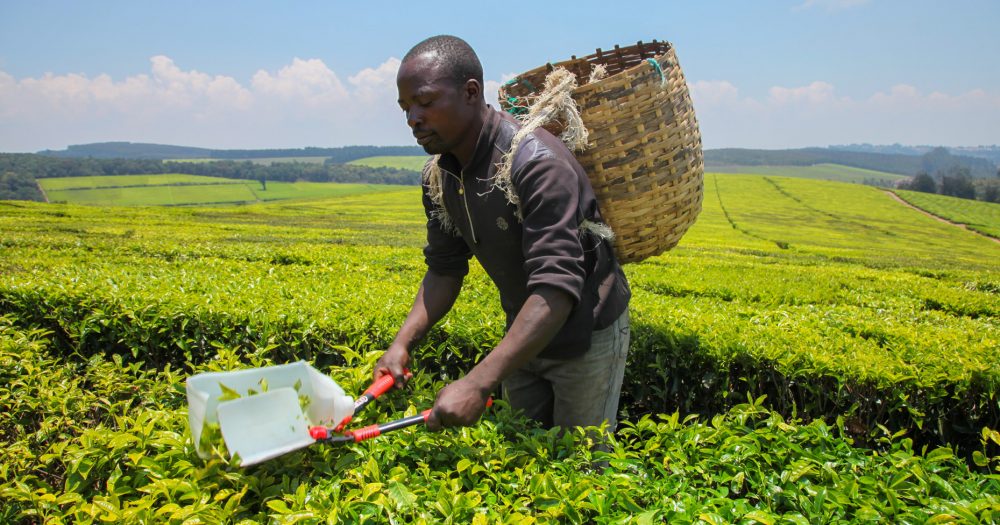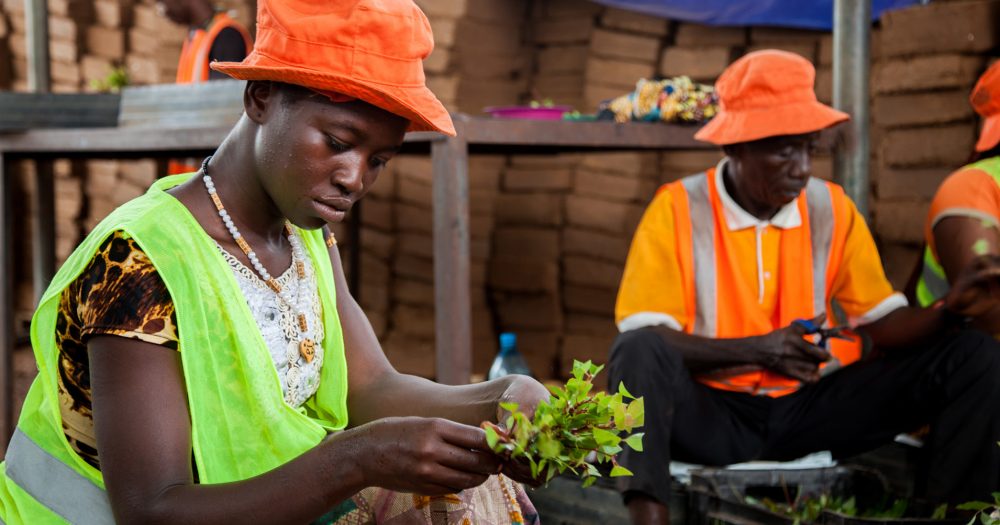This investment was made when British International Investment was named CDC Group.
Our investment
Description of the investment.
Description of the investment.
In 2017, CDC invested $45 million into AIIF III alongside German DFI, DEG. We made a follow-on commitment in 2018, and another commitment in 2020. Our investment will support the development of vital infrastructure in Africa.
Impact information
Applies to investments made from 2019 onwards. The tabs in this section define what we expect to achieve through the investment, assessing the potential impact of the investment against six dimensions of impact. You can find more details on our methodology of assessing impact here.
Applies to investments made from 2019 onwards. The tabs in this section define what we expect to achieve through the investment, assessing the potential impact of the investment against six dimensions of impact. You can find more details on our methodology of assessing impact here.
What?
| Impact |
|---|
|
|
|
How?
| How? |
|---|
|
Economic enabler: Increase the supply of reliable and affordable energy, cooking fuel, ICT infrastructure, increasing productivity, and so lead to economic growth, job creation and improved quality of life. |
Who?
| Stakeholder | Geography | Characteristics |
|---|---|---|
| Consumers |
Top up: Pan-Africa, approximately 45 per cent Morocco (category ‘D’ country), 33 per cent Ghana (category ‘C’), 19 per cent South Africa (category ‘D’), 4 per cent Mali (category ‘A’). AIIF III (incl. top up): Pan-Africa, approximately 34 per cent Ghana (category ‘C’ country ), 21 per cent Nigeria (category ‘B’), 16 per cent Morocco (category ‘D’), 7 per cent South Africa (category ‘D’), 7 per cent Mali (category ‘A’), 4 per cent Tanzania (category ‘B’) 4 per cent DRC (category ‘A’), 3 per cent Kenya (category ‘C’), 3 per cent Rwanda (category ‘C’), 1 per cent Congo (category ‘A’). |
Urban/peri-urban households |
| Employees |
Top up: Pan-Africa, approximately 45 per cent Morocco (category ‘D’ country), 33 per cent Ghana (category ‘C’), 19 per cent South Africa (category ‘D’), 4 per cent Mali (category ‘A’). AIIF III (incl. top up): Pan-Africa, approximately 34 per cent Ghana (category ‘C’ country ), 21 per cent Nigeria (category ‘B’), 16 per cent Morocco (category ‘D’), 7 per cent South Africa (category ‘D’), 7 per cent Mali (category ‘A’), 4 per cent Tanzania (category ‘B’) 4 per cent DRC (category ‘A’), 3 per cent Kenya (category ‘C’), 3 per cent Rwanda (category ‘C’), 1 per cent Congo (category ‘A’). |
Unknown |
How much?
| Scale | Depth/Duration |
|---|---|
|
|
Contribution/additionality
| Contribution/additionality |
|---|
|
Grid score
| Grid Score
To help us direct our investments, we previously used a tool called the Development Impact Grid. It scored investments out of four, based on two factors: the difficulty of investing in a country and the propensity of the sector to generate employment. This tool was used for investments until the end of 2021. Since 2022 it has been replaced by the Impact Score. |
|---|
2.4 |
Risk
Alignment Risk
Efficiency Risk
Unexpected Impact Risk
|
Environmental and social information
-
Environmental and social summary
A high-level description of the environmental and social aspects of the investment. This may include a summary of key environmental and social risks identified during environmental and social due diligence (ESDD); key elements of an environmental and social action plan (ESAP); or ways in which we plan to support the investee improve environmental and social standards, such as through their environmental and social management system (ESMS); as well as any other priority areas agreed with the investee.
-
Environmental and social risk
A risk category rating, which indicates the level of environmental and social risk associated with an investment. For an explanation of the categorisations used, see here. We consistently provide an environmental and social risk category for all investments screened from 2023 onwards.
Environmental and social summary
We worked closely with the fund manager to develop and implement an ESMS that has the capacity to manage the higher level of environmental and social risk associated with this sector.
Reporting and Complaints Mechanism
The Reporting and Complaints Mechanism allows anyone outside BII to report alleged breaches of the business integrity or environmental and social provisions of BII’s Policy on Responsible Investing. This includes breaches made by BII, a BII investee, or a portfolio company of a fund in which BII has invested. The Reporting and Complaints Mechanism Rules are available here. Reports and complaints can be submitted by email to reportsandcomplaints@bii.co.uk or by mail. See more details on our Reporting and Complaints Mechanism here.
For any other general enquiries contact us at enquiries@bii.co.uk
-
Key facts
- Last updated
:
When the last quarterly update of the website database occurred.
- December 2024
- Project number
:
An identifier number shared by investments in the same project.
- D1839
- Status
:
The current status of the investment (green flag for active and red flag for exited).
- Active
- Region
:
The geographical region where the country is located. We currently invest in Africa, South Asia, South East Asia and the Caribbean. In 2023, BII’s investment mandate was extended allowing it to invest in regional funds linked to Ukraine, with the majority of activity expected to begin post-war. Investments outside these regions were made prior to 2012 under previous investment mandates.
- Africa
- Sector
:
We prioritise those sectors that facilitate development and need our capital the most. Our priority sectors contribute towards many of the Sustainable Development Goals. They range from investing in the power infrastructure that will provide people with better access to electricity, to investing in financial institutions that direct capital to the individuals and businesses that need it the most.
- Financial services, Infrastructure, Technology and telecoms
- Investment type :
- Fund
- Start date :
- December 2018
- Amount :
- $5m
- Currency of investment :
- USD
- Fund manager:
- African Infrastructure Investment Managers
- Domicile
:
The company or investment fund’s place of incorporation.
- South Africa
We provide capital in the following ways: directly – through direct equity, direct debt, guarantees and other non-intermediated financial instruments; and indirectly – principally through investment funds.
For direct investments and fund investments, this is the date BII committed capital to the investments. This is typically the date on which legal agreements are signed by all parties.
For the portfolio companies of our fund investments, this is the date (either the month or the quarter) on which the fund committed capital to the portfolio company.
For direct equity investments, this is the date at which British International Investment exited the investment.
For debt investments, this is the date at which the final debt repayment was made.
For funds, this is the date at which the fund was terminated.
For underlying fund investments, this is the date at which the fund manager exited the investment.
The total amount committed, per financial instrument, per investment, on the date BII becomes subject to a binding legal obligation to provide funding or assume a contingent liability. This information is provided in US dollars.
For direct investments, this is the amount that BII has committed to the business or project. For fund investments, this is the amount BII has committed to the fund.
The currency in which the investment was made.
- Energy type
:
‘Renewable’ includes energy sources with very low lifecycle emissions such as solar, wind and tidal or those meeting a certain criteria such as hydro power, biomass or geothermal. ‘Fossil fuel’ includes coal, oil and gas. Investments labelled as ‘Mixed’ support a combination of renewable and fossil fuel assets.
- Mixed
- Last updated
Related investments made by BII into this fund:
| Investment name | Commitment | Region | Sector | Start date | Status |
|---|---|---|---|---|---|
| Investment 02 | $45m | Africa | Financial services, Infrastructure, Technology and telecoms | May 2017 | Active |
| Investment 01 | $15.63m | AfricaAfrica | Financial services, Infrastructure, Technology and telecoms | November 2020 | Active |
Investments made by this fund into companies:
For further information about these companies, visit https://aiimafrica.com/
| Investment name | Country | Region | Sector | Energy Type | Start date | Status |
|---|---|---|---|---|---|---|
| AIIM Hydroneo | Ghana, Mali, Morocco, South Africa | North Africa, Southern Africa, West Africa | Infrastructure | Renewable | June 2017 | Active |
| Albatros Energy | Mali | West Africa | Infrastructure | Fossil Fuel | June 2017 | Active |
| Amandi Energy | Ghana | West Africa | Infrastructure | Fossil Fuel | December 2017 | Active |
| Beyond Energy Investments Ltd | Africa | Africa | Financial services | Renewable | November 2018 | Active |
| Central African Corridor Company (CACC) | Zambia | Southern Africa | Infrastructure | May 2019 | Active | |
| DSM Corridor Group | Tanzania | East Africa | Infrastructure | June 2017 | Active | |
| Eastcastle Infrastructure Holdings Ltd | Cote d'Ivoire, Democratic Republic of Congo, Nigeria | Central Africa, West Africa | Technology and telecoms | July 2021 | Active | |
| Ecow Gas | Africa | Africa | Infrastructure | Fossil Fuel | December 2021 | Active |
| Maria Gleta | Benin | West Africa | Infrastructure | Fossil Fuel | February 2019 | Active |
| Metrofibre Networx | South Africa | Southern Africa | Technology and telecoms | January 2021 | Active | |
| Onix Accra 1 | Ghana | West Africa | Technology and telecoms | February 2021 | Active | |
| Petroleum Products Pipeline SA (3PL) | Cameroon | Central Africa | Infrastructure | Fossil Fuel | March 2018 | Active |
| Proton Energy | Nigeria | West Africa | Infrastructure | Fossil Fuel | June 2017 | Active |
| Société d’Exploitation et de Gestion Aéroportuaire (SEGAP) | West Africa | Africa | Infrastructure | June 2018 | Active | |
| Sodigaz Group | Burkina Faso | West Africa | Infrastructure | Fossil Fuel | August 2021 | Active |
| Starsight Power Utility Limited | Nigeria | West Africa | Infrastructure | Renewable | December 2017 | Active |
| Tema LNG Terminal Company | Ghana | West Africa | Infrastructure | Fossil Fuel | February 2020 | Active |
| Uquo Integrated Gas Business (Accugas) | Nigeria | West Africa | Infrastructure | Fossil Fuel | March 2018 | Active |
| Volta (ETIX) | Ghana | West Africa | Infrastructure | October 2022 | Active | |
| Zina Solaire | Burkina Faso | West Africa | Infrastructure | June 2017 | Exited |


